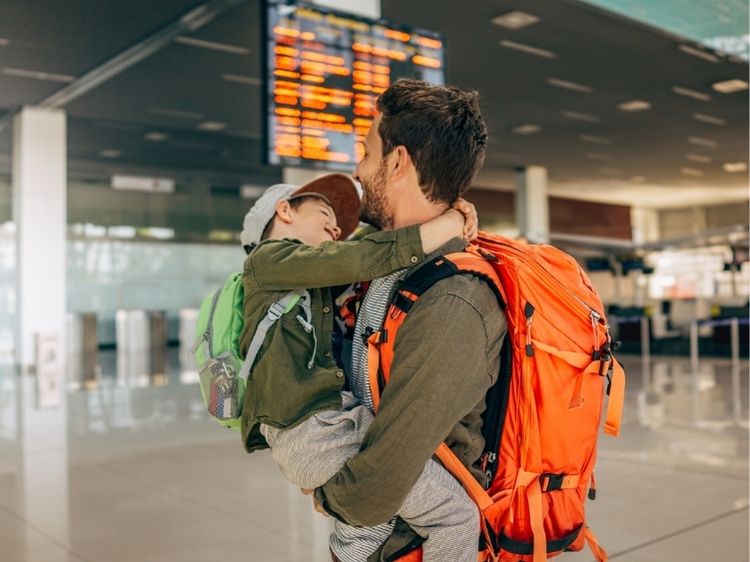Why You Should Care About US Travel Advisories
When it comes to planning your dream vacation or a crucial business trip, knowing the ins and outs of the US travel advisory system can make all the difference. It’s not just about packing your bags and booking flights anymore; understanding travel advisories ensures you’re prepared for potential risks, from political unrest to natural disasters. So, let’s dive in and explore what these advisories mean and how they impact your travel plans.
What Is the US Travel Advisory System?
The US travel advisory system is a framework used by the Department of State to inform citizens about safety risks in foreign countries. These advisories are divided into four levels:
- Level 1 – Exercise Normal Precautions:
These destinations are relatively safe, with no significant threats. - Level 2 – Exercise Increased Caution:
Here, travelers should be aware of specific risks, such as minor political unrest or petty crime. - Level 3 – Reconsider Travel:
Countries at this level pose higher risks, including safety threats from crime, terrorism, or health issues. - Level 4 – Do Not Travel:
This is the most severe advisory, often due to war, civil unrest, or widespread health crises.
How Are Travel Advisories Determined?
Ever wonder how these advisories are created? Well, they’re not plucked out of thin air! The State Department evaluates several factors, including:
- Crime and Safety Reports: Crime rates and law enforcement efficiency.
- Terrorism Threats: Areas with active terrorist groups.
- Natural Disasters: Regions prone to hurricanes, earthquakes, or other hazards.
- Health Risks: Outbreaks of diseases like COVID-19, malaria, or dengue.
- Political Stability: Ongoing protests, coups, or civil unrest.
The Department works closely with embassies, intelligence agencies, and local governments to provide up-to-date, reliable information.
Why US Travel Advisories Matter
Protecting Your Safety
Picture this: You’re halfway across the globe, and suddenly there’s a political protest that turns violent. If you’d read the advisory for that country, you might have been better prepared—or avoided the area altogether.
Saving Money and Time
Cancelled flights? Missed connections? Extra hotel stays? These are costly scenarios that could be avoided by heeding travel advisories.
Avoiding Legal Troubles
Some countries have strict laws that might surprise you. Did you know chewing gum is illegal in Singapore? Travel advisories often highlight such quirky laws to keep you out of trouble.
How to Stay Updated on US Travel Advisories
It’s easy to stay in the know! Here are some tips to keep you informed:
- Visit the Official Website: The Department of State’s travel advisory page (travel.state.gov) is your go-to source.
- Sign Up for STEP (Smart Traveler Enrollment Program): This free service keeps you updated on emergencies in your destination country.
- Download Travel Apps: Apps like Smart Traveler provide real-time updates.
- Follow Social Media Accounts: The State Department and embassies often post updates on Twitter or Facebook.
Common Questions About US Travel Advisories
What should I do if my destination has a Level 2 or Level 3 advisory?
First, don’t panic! A Level 2 advisory means you need to exercise caution—think twice about where you go and stay informed. For Level 3, reconsider your trip unless it’s absolutely necessary.
Are travel advisories legally binding?
Nope! These advisories are recommendations, not restrictions. However, ignoring them could lead to personal risks and limited assistance from US embassies abroad.
How often are travel advisories updated?
Travel advisories are updated regularly, especially when conditions change. It’s best to check for updates right before you travel.
Tips for Traveling Safely
Feeling adventurous despite a higher-level advisory? Here are some tips to minimize risks:
- Research Local Customs and Laws: Know the dos and don’ts.
- Keep Emergency Contacts Handy: Have the local US embassy’s number on speed dial.
- Register with STEP: This ensures the embassy knows your whereabouts in case of emergencies.
- Purchase Travel Insurance: Coverage for health issues, cancellations, and emergencies is a lifesaver.
- Avoid High-Risk Areas: Stay away from political rallies, crime-prone neighborhoods, or regions with recent disasters.
US Travel Advisories: Not Just for International Trips
Wait—travel advisories for the US? Yep, you heard that right! International governments issue their own advisories for citizens traveling to the United States. These often highlight concerns like:
- Gun violence
- Natural disasters (hurricanes, tornadoes, wildfires)
- Health emergencies
It’s a reminder that safety works both ways, and travelers should always do their homework.
The Role of Technology in Travel Safety
Thanks to modern technology, staying informed has never been easier. Here are some tools to keep you in the loop:
- Google Alerts: Set up alerts for news about your destination.
- Translation Apps: Language barriers? Not anymore. Apps like Google Translate can help.
- GPS and Mapping Tools: Apps like Waze or Google Maps provide real-time updates on road conditions.
FAQs: Everything You Need to Know About US Travel Advisories
- What’s the difference between a travel advisory and a travel alert?
A travel advisory provides ongoing information about risks in a destination. A travel alert is more short-term, often related to specific events like hurricanes or protests. - Can I still travel to a country with a Level 4 advisory?
Technically, yes. But you’ll likely face limited embassy assistance and heightened risks. - How do I know if my insurance covers travel to high-risk areas?
Contact your insurance provider and review the fine print. Many plans exclude coverage for Level 4 destinations. - Should I trust third-party websites for travel advisory info?
While third-party sites can be helpful, always cross-check with official sources like travel.state.gov.
Conclusion: Plan Smart, Travel Safe
Navigating the world of travel advisories might seem overwhelming, but it’s a vital part of trip planning. Whether you’re headed to a bustling city or a remote island, being informed ensures you’ll have a safer, smoother experience. So, bookmark the US travel advisory page, pack your bags, and embark on your next adventure with confidence!
Authoritative Sources:
- travel.state.gov
- www.cdc.gov/travel
- www.who.int

